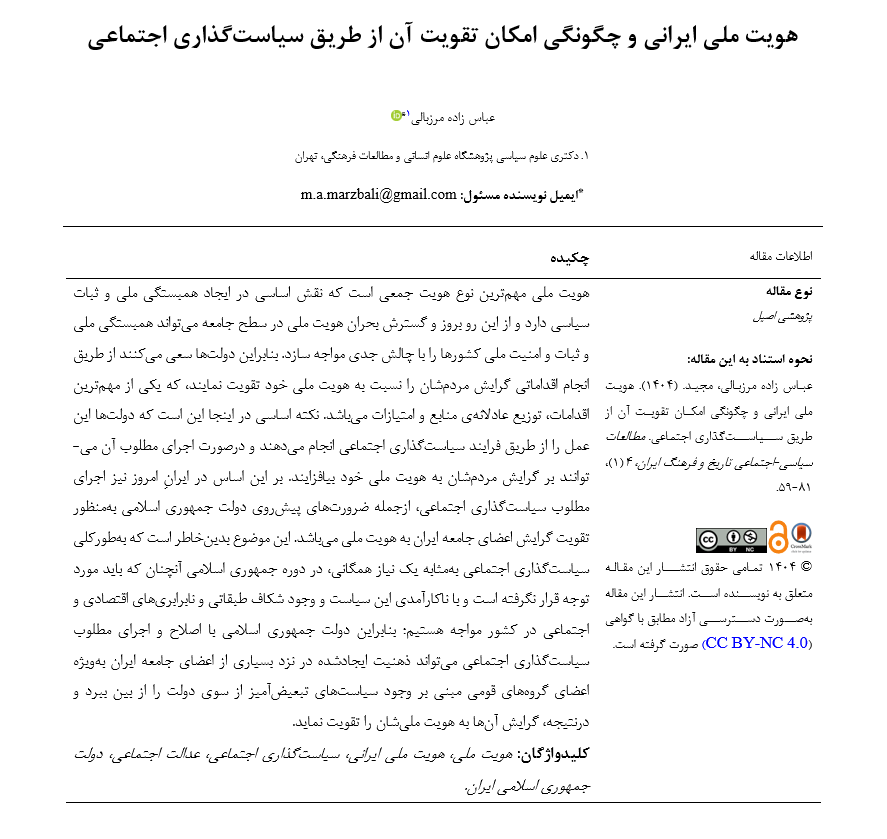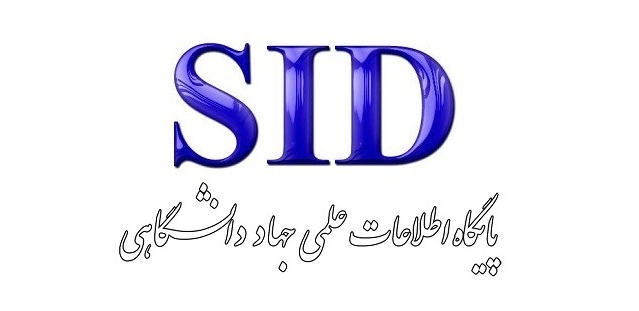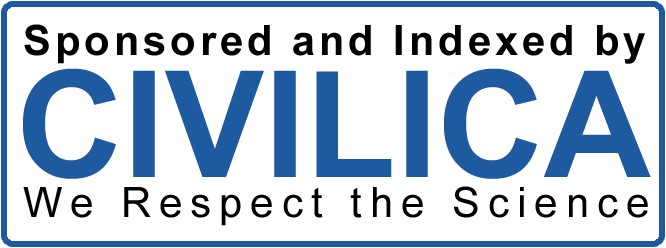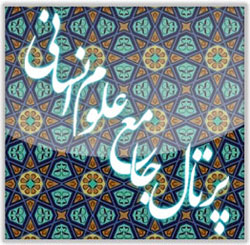هویت ملی ایرانی و چگونگی امکان تقویت آن از طریق سیاستگذاری اجتماعی
کلمات کلیدی:
هویت ملی, هویت ملی ایرانی, سیاست¬گذاری اجتماعی, عدالت اجتماعی, دولت جمهوری اسلامی ایرانچکیده
هویت ملی مهمترین نوع هویت جمعی است که نقش اساسی در ایجاد همبستگی ملی و ثبات سیاسی دارد و از این رو بروز و گسترش بحران هویت ملی در سطح جامعه میتواند همبستگی ملی و ثبات و امنیت ملی کشورها را با چالش جدی مواجه سازد. بنابراین دولتها سعی میکنند از طریق انجام اقداماتی گرایش مردمشان را نسبت به هویت ملی خود تقویت نمایند، که یکی از مهمترین اقدامات، توزیع عادلانهی منابع و امتیازات میباشد. نکته اساسی در اینجا این است که دولتها این عمل را از طریق فرایند سیاستگذاری اجتماعی انجام میدهند و درصورت اجرای مطلوب آن میتوانند بر گرایش مردمشان به هویت ملی خود بیافزایند. بر این اساس در ایرانِ امروز نیز اجرای مطلوب سیاستگذاری اجتماعی، ازجمله ضرورتهای پیشروی دولت جمهوری اسلامی بهمنظور تقویت گرایش اعضای جامعه ایران به هویت ملی میباشد. این موضوع بدینخاطر است که بهطورکلی سیاستگذاری اجتماعی بهمثابه یک نیاز همگانی، در دوره جمهوری اسلامی آنچنان که باید مورد توجه قرار نگرفته است و با ناکارآمدی این سیاست و وجود شکاف طبقاتی و نابرابریهای اقتصادی و اجتماعی در کشور مواجه هستیم؛ بنابراین دولت جمهوری اسلامی با اصلاح و اجرای مطلوب سیاستگذاری اجتماعی میتواند ذهنیت ایجادشده در نزد بسیاری از اعضای جامعه ایران بهویژه اعضای گروههای قومی مبنی بر وجود سیاستهای تبعیضآمیز از سوی دولت را از بین ببرد و درنتیجه، گرایش آنها به هویت ملیشان را تقویت نماید.
دانلودها
مراجع
Abolhasan Shirazi, H., & Amjadiyan, F. (2008). The impact of federalism in Iraqi Kurdistan on the political and ethnic norms of Kurds in Iran. Political and International Approaches Quarterly(14).
Ahmadi, H. (2003). Iranian identity throughout history. National Studies Quarterly, 4(3), 9-45.
Ahmadi, H. (2011). Foundations of Iranian national identity. Tehran: Cultural and Social Studies Research Institute.
Ahmadpour, K., & Serajzadeh, S. H. (2019). National identity in Iran: A systematic review of scientific-research articles (2011-2016). National Studies Quarterly, 20(78), 3-24.
Akhavan Kazemi, M., & Qaemi, Y. (2022). Roots and various forms of tendencies toward violence and aggression in social and political interactions in Iranian society. Crisis Research in the Islamic World Quarterly, 9(4), 1-18.
Alcock, C., Daly, G., & Griggs, E. (2008). Introducing Social Policy. Harlow: Pearson Longman.
Amiri, A., Amoozgar, S., & Arefi, M. (2020). Explaining the relationship between levels of development and security in Iranian provinces. Regional Planning Quarterly, 10(40), 15-34.
Ashraf, A. (2016). Iranian identity: From ancient times to the end of Pahlavi. Tehran: Ney Publishing.
Bashiriyeh, H. (2004a). Political development and the crisis of national identity In: D. Mir-Mohammadi (Ed.), Discussions on national identity in Iran. Tehran: National Studies Institute.
Bashiriyeh, H. (2004b). Reason in politics. Tehran: Contemporary Look.
Behrouz Lak, G. R., & Zabetpour Kari, G. R. (2012). Theoretical challenges of social justice in the Islamic Republic of Iran. Political Science Quarterly, 15(57), 103-148.
Beland, D., & Lecoures, A. (2008). Nationalism and Social Policy: the Politics of Territorial Solidarity. UK: Oxford University Press.
Bradshaw, J. (1972). The Concept of Social Need. London: Stateman and Nation Publishing.
Dani, A., & Haan, A. (2008). Inclusive State: Social Policy and Structural Inequalities. USA: The World Bank. https://doi.org/https://doi.org/10.1596/978-0-8213-6999-9
Dub, S. C. (1999). Communications and nation-building. National Studies Quarterly, 1(1), 155-171.
Eftekhari, A. (2004). Religious minorityism. Tehran: Iranian Civilization Publishing.
Ehteshami, A., & Zweiri, M. (2007). Iran and the Rise of its Neoconservatives: the Politics of Tehran's Silent Revolution. London/New York: I.B. Tauris.
Fawzi, Y. (2020). Political-social developments in the Islamic Republic of Iran (1979-2017). Tehran: Samt.
Gar, T. R. (1999). Minorities, nationalists, and political confrontations (Vol. 1).
Ghasemi, A. A., & Ebrahimabadi, G. R. (2011). The relationship between national identity and national unity in Iran. Strategic Studies Quarterly(59), 107-138.
Hafeznia, M. R. (2014). Political geography of Iran. Tehran: Samt.
Hajiani, I. (2000). A sociological analysis of national identity in Iran and the proposal of several hypotheses. National Studies Quarterly, 5, 193-228.
Hezar Jaribi, J., & Safari Shali, R. (2015). Examining the discourse of justice governing the concept of social security in the governments after the Islamic Revolution. Welfare Planning and Social Development Quarterly, 6(23), 1-49.
Karimi, A. (2001). The potentials for transforming competition into political conflict in Iran. National Studies Quarterly, 3(9), 49-70. https://doi.org/https://doi.org/10.1111/1467-9248.00303
Karimi, A., & Ghasemi Tusi, S. (2014). Social policy and national identity formation. National Studies Quarterly, 15(2), 25-48.
Karimi Malah, A. (2014). Societal and political security through social policy-making. Strategic Studies Quarterly, 17(65), 35-70.
Karimi, W. (2007). The necessity of a social policy in Iran. Strategic Studies Quarterly(45), 153-172.
Kavyani Rad, M. (2010). Regionalism in Iran from the perspective of political geography. Tehran: Strategic Studies Research Institute.
Khodai, I., & Mobaraki, M. (2008). Social capital and identity. Political and International Approaches Quarterly(16), 119-151.
Krohn, J. (2011). Sociology of social issues. Tehran: Sociologists Publishing.
Law, A., & Moony, G. (2012). Devolution in a Stateless Nation: Nation-building and Social Policy in Scotland. Social Policy and Administration, 46(2), 161-177.
Lewise, G., Gewirtz, S., & Clarke, J. (2000). Rethinking Social Policy. London: Sage.
Morgan, G. (2006). Images of Organization. London: Sage.
Mullard, M., & Spicker, P. (2006). Social Policy in Changing Society. London: Routledge. https://doi.org/https://doi.org/10.4324/9780203981078
Naqibzadeh, A. (2002). The impact of national culture on the foreign policy of the Islamic Republic of Iran. Tehran: Office for Political and International Studies.
Nasri, G. (2008). Foundations of Iranian identity. Tehran: Iranian Civilization Publishing.
Nazari, A. A., & Sazmand, B. (2011). Models, patterns, and strategies for managing identity diversities In: M. Maqsoudi (Ed.), Social Institutions and National Solidarity. Tehran: Iranian Civilization Publishing.
Nematimiri, F., Shirzadi, R., & Sadiq, M. (2021). Explaining the performance and comparing the Reconstruction Government and Justice-oriented Government on class gaps. Specialized Political Science Quarterly, 17(57), 128-150.
Omidi, R. (2016). Social policy developments during the Pahlavi era: The ups and downs of the government-citizen relationship. Welfare Planning and Social Development Quarterly, 7(28), 151-192.
Philips, D. (2006). Quality of Life: Concept, Policy and Practice. London: Routledge. https://doi.org/https://doi.org/10.4324/9780203356630
Qarakhani, M. (2011). Research on social policy in Iran. Welfare Planning and Social Development Quarterly, 3(9), 123-148.
Qarakhani, M. (2014). Conditions for the possibility and reasons for the refusal of interdisciplinary social policy in Iran. Interdisciplinary Studies in Humanities Quarterly, 6(2), 33-55.
Qarakhani, M. (2021). Government and social policy in Iran. Tehran: Agah Publishing.
Rabbani, J. (2002). National identity. Tehran: Parents and Teachers Association Publishing.
Rahimi, A. (2017). Nation-building strategies and uneven development in Iran. Strategic Studies Quarterly, 20(78), 65-101.
Rajaei, F. (2007). The dilemma of Iranian identity today. Tehran: Ney Publishing.
Ramazani Farokh, A. (2008). Social security as a means of achieving justice. Social Security Quarterly, 10(32 & 33), 31-62.
Ramazanzadeh, A., & Bahmaniqajar, M. A. (2008). Iranian identity and ethnic diversity. National Studies Quarterly, 33, 69-95.
Rezapour Qoshchi, M., & Naderi, M. (2014). Globalization and ethnic pluralism in Iran: Challenges and opportunities. Globalization Strategic Studies Quarterly, 5(14), 55-91.
Salehi Amiri, S. R. (2006). Managing ethnic conflicts in Iran. Tehran: Strategic Research Center.
Scott, R. W., & Davis, G. F. (2007). Organization and Organizing: Rational, Natural and Open System Perspectives. Pearson Prentice Hall.
Seifollahi, S., Marvat, B., & Ghaisvandi, A. (2014). The formation of ethnic and national identity and the social factors affecting it among the residents of Karaj. Social Sciences Quarterly, Islamic Azad University, Shushtar Branch, 8(1), 103-142.
Seyed Emami, K. (2012). Cultural diversity and the necessity of preserving it. Cultural-Communication Studies Quarterly, 20.
Seyed Emami, K., & Hoshangi, H. (2016). Policy-making for ethnic diversity in the Islamic Republic of Iran: Perspectives, goals, and proposed policies. National Studies Quarterly, 17(2), 3-21.
Smith, A. (2000). The Nation in History: Historiographical Debates about Ethnicity and Nationalism. Polity Press.
Smith, A. D. (2004). Nationalism: Theory, ideology, history. Tehran: Iranian Civilization Publishing.
Taheri Attar, G. (2013). Designing and explaining a sustainable nation-building model. Strategic Policy Research Quarterly, 2(7), 34-67.
Tajik, M. R. (2005). The narrative of otherness and identity among Iranians. Tehran: Cultural Discourse.
Weick, K. E. (2006). Faith, Evidence, and Action: Better Guesses in an Unknowable World. Organization Studies, 27, 1723-1736. https://doi.org/https://doi.org/10.1177/0170840606068351
Woodward, K. (2000). Questioning Identity: Gender, Class, Nation. London: Routledge.
Zahiri, A. (2010). The Islamic Republic of Iran and the issue of national identity. Qom: Research Institute of Islamic Sciences and Culture.








